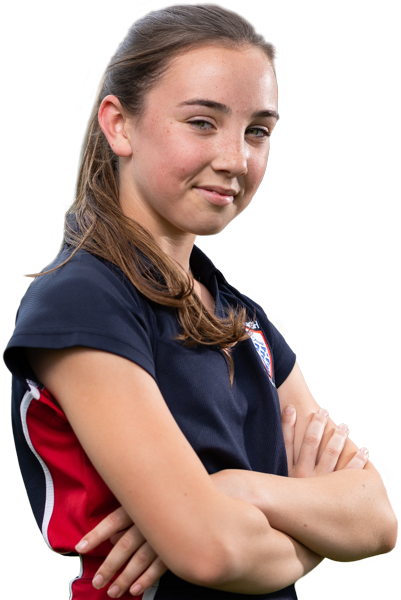Design & Technology structures the curriculum into a three year Key Stage 3, a two year KS4 and a two year KS5 curriculum. The curriculum is a progressive model. Subject and cross subject sequencing intends to develop schemata making subsequent learning possible.
Subject specialists have given consideration and thought to the sequence and rationale of the curriculum; why we teach the content we do and in the order that we do. This is to ensure knowledge is not isolated information; it is connected knowledge that enables comprehension.
At Key Stage 3, the full National Curriculum is delivered. The Design & Technology curriculum is organised into topics. Each topic which contains a sequence of lessons, builds on prior knowledge allowing connections to be made and enables knowledge to be transferable. In Design and Technology we believe this facilitates deeper comprehension. The topic of content taught is chosen so lessons focus on developing deeper understanding and capacity for skilful performance.
At Key Stage 4, the full Design & Technology GCSE, Constructing the Built Environment Level 2 & Pearson Engineering Tech award are delivered. Content is structured into units. We do not ‘teach to the test.’ The curriculum is designed to ensure students Work with confidence in problem solving, developing practical skills and have the self-assurance to take on challenging projects. Each lesson builds on prior learning, allowing connections to be made between content Units have been organised and designed to promote learning and provide depth and breadth of understanding
At Key Stage 5 the Pearson Engineering foundation diploma is delivered. Content is structured into units. We do not ‘teach to the test.’ The curriculum is designed to ensure students develop, Problem solving skills, team building knowledge, Computer aided design and computer aided manufacturing skills, as well as embedding practical understanding. Each lesson builds on prior learning, allowing connections to be made between content. Units have been organised and designed to promote learning and provide depth and breadth of understanding
Student voice has been conducted to ensure that students have a contribution to the curriculum content. This has resulted in CAD/CAM and increased practical topics being introduced.
The Design & Technology Department is a member of the Design and Technology Association and works alongside the School Improvement Partners to quality assure our curriculum and ensure that it provides a high quality and comprehensive curriculum for all.
The pedagogical approach for Design & Technology adheres to the LLT Teaching and Learning Policy. Subject specialists deliver the Design & Technology curriculum through 4/5,55-minute lessons per fortnight
Rosenshine and ‘Teach Like a Champion’ strategies are implemented in all lessons and lesson episodes are designed to enable students to store knowledge into the long-term memory.
Tasks and activities are engaging and whenever possible are linked to local context, careers and progression and develop cultural capital. Examples include Chinese Calendar Project, Ikea Nightlight Project and Designers and Design influences project, all units have references to cultural capital and local contexts in terms of career opportunities.
Lessons are structured to enable students to review/retrieve prior knowledge and activate it to make connections with new learning. This is through ‘Do It Now’ tasks at the start of each lesson
In each lesson, students are informed what they are learning and what the outcomes for the lesson are. We call these ‘WALT’ (What we are all learning today,) and ‘WILF’ (What I’m Looking For.)
New information is delivered in small steps and models are provided to support student comprehension. Such as, new materials in small steps, WAGOLL’s, and own and track, exemplar answers.
Lessons provide opportunities for students to practice applying their new learning. This may include guided and/or independent practice
Questioning is used to inform adaptive teaching, and this includes techniques such as ‘right is right’ to ensure students accurately and clearly articulate their responses.
Students are asked to complete practical based activities such as design and make challenges, including a range of materials, topics and concepts to challenge and inspire students. The taught topics develop understanding of essential knowledge and disciplinary knowledge, so that students can effectively identify problems and produce effective solutions considering all or the relevant factors.
Students develop essential knowledge and then apply it in activities that ‘bring it all together.’ This ensures they connect knowledge and learning.
We assess an ever expanding curriculum. Assessment takes place in the form of formative and summative assessment tasks. These are carefully considered and link directly to the curriculum intent for the half term. Summative assessment samples from the whole curriculum – not just what has been most recently taught.
Clear ‘essential knowledge reading’ activities are provided to support reading development and provide depth and breadth to the curriculum. Examples include ‘BBC; where does are energy come from? and Technology student. Com, understanding materials.
In Design & Technology, teachers:
Clearly communicate their subject discipline using appropriate vocabulary. This includes the use of command words, vocabulary lists, Tier 2 and 3 vocabulary
Design & Technology reading materials are carefully selected to develop reading and comprehension skills. The Design & Technology department teach reading comprehension strategies through Highlighted reading, We provide support for students so they can access challenging texts such as the history of designers and design movements, which students will take inspiration from as part of the challenge.
In Design & Technology we provide opportunities for students to ‘bring together’ knowledge developed. This is through extended writing tasks, practical demonstrations or other examples of disciplinary literacy.
To develop oracy the Design & Technology uses:
Physical and linguistic strands to assist in students ability to communicate ideas and concepts verbally.
We have a range of additional wider curriculum opportunities such as F1 in schools, radio controlled car club and STEM club, enhancing the provision for students.

This site uses cookies that enable us to make improvements, provide relevant content, and for analytics purposes. For more details, see our Cookie Policy. By clicking Accept, you consent to our use of cookies.